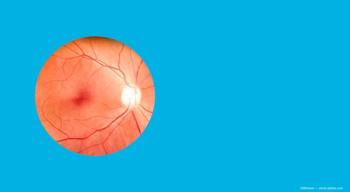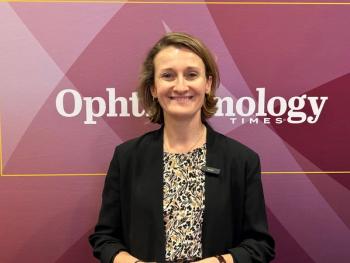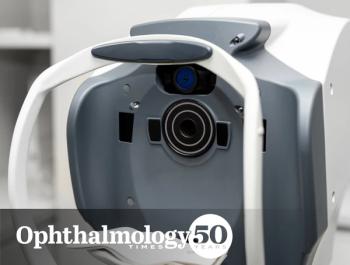
- Ophthalmology Times: February 1, 2021
- Volume 46
- Issue 2
Do you 'need' or just 'want' that new diagnostic imaging device?
Physicians should evaluate which options best meet the needs of their practices.
This article was reviewed by Judy E. Kim, MD
Many imaging modalities are available for ophthalmologists to use in clinical care, but whether a specific technology is essential for individual clinicians depends on a variety of factors, according to Judy E. Kim, MD.
Kim, a professor of ophthalmology and director of teleophthalmology at the Medical College of Wisconsin in Milwaukee.
She also offered her perspectives on how the features influence whether a particular device might be deemed a “need” versus a “want” for ophthalmologists in different practice situations.
“The discussion of determining whether anything is a need versus a want centers on 1 issue: Is it essential or just something that is desired or wished for,” she said. “However, the definition of essential is subjective and differs in different situations.”
Kim pointed out that with imaging devices, as in life, ophthalmologists have to prioritize their needs and wants.
“It can be a tricky balancing act that involves weighing what is necessary to provide best care for patients versus the cost, ease of use, accuracy, and the additional information provided by the device along with the needs of other clinicians in a practice, among many other considerations,” she explained.
Top of the list
The needs for imaging modalities vary between general ophthalmologists and different subspecialists.
As a retina specialist, Kim said that if she had to choose just 1 imaging modality, it would be spectral domain (SD) OCT. SD OCT platforms generate high-resolution cross-sectional and en face images of the retina, anterior segment, and optic nerve head.
Related:
This noninvasive imaging modality has revolutionized the diagnosis and management of retinal diseases by providing information that is often not readily visible on clinical evaluation.
Swept-source (SS) OCT is a newer technology that affords better imaging of the choroid and vitreous, improved imaging through blood and media opacity, and a wider field of view compared with SD-OCT.
However, Kim classified SS-OCT as a want rather than a need because of its cost and the fact that the information provided by SD-OCT currently suffices for patient management.
Other tools
Ultrasound is not often used by retina specialists, but Kim still considered it a need because it allows visualization of the posterior segment when other imaging is not possible.
As a result, it allows diagnosis of retinal detachment, intraocular foreign body, posterior scleritis, optic nerve head drusen, and other issues.
It is also essential for ocular oncologists, who use it more often to differentiate various types of tumors and to monitor for tumor growth, but it may not be essential for general ophthalmologists, she said.
Although some ophthalmologists feel there is no longer a need for color fundus imaging, Kim said she still finds it useful for documentation and education. However, she is relying more on widefield and ultra-widefield systems that image between 50º and 200º field, respectively.
Related:
“Why limit ourselves to a small field of view when we can see so much more with widefield or ultra-widefield imaging,” she said, adding that being able to image a widefield with a single shot is useful for imaging children, who often cannot sit for long periods.
As a major benefit, ultra-widefield imaging allows documentation and evaluation of a multitude of retinal conditions that affect the periphery as well as the posterior pole.
Furthermore, whereas images acquired with conventional fundus cameras can be suboptimal in eyes with small or undilated pupils, systems that utilize confocal scanning laser ophthalmoscopy can photograph the peripheral retina in eyes with pupil diameters as small as 2.5 mm.
“Imaging through an undilated pupil may be especially useful for teleretinal screening and for allowing faster flow of patients in the clinic, which has become especially important during the [coronavirus disease 2019] pandemic,” Kim said.
“In addition, several studies have established the equivalence in sensitivity between nonmydriatic ultra-widefield scanning laser ophthalmoscopy images and dilated [Early Treatment Diabetic Retinopathy Study] standard 7-field stereo photographs for evaluating the severity of
Related:
Kim said she considers ultra-widefield fundus fluorescein angiography (FA) to be another essential tool for managing patients with retinal vascular disease.
According to Kim, for most ophthalmologists, fundus autofluorescence (FAF) may be desirable but not essential.
She explained that FAF is a useful modality for assessing progression of geographic atrophy in patients with dry age-related macular degeneration and for studying and managing eyes with rare inherited retinal degenerative diseases.
In addition, FAF is useful adjunctive imaging to SD-OCT as a screening tool for hydroxychloroquine toxicity because it can detect early as well as late stages of this condition.
“For Asian patients, widefield fundus autofluorescence may be useful given evidence that changes in the paracentral macula may be present early in the development of hydroxychloroquine toxicity within this racial group,” Kim noted.
Related:
OCT angiography (OCT-A) is another type of OCT that allows noninvasive visualization of retinal and choroidal vessels without the use of intravenous dye. It is ideal for patients who are allergic to fluorescein dye or who are pregnant.
Compared with FA, evaluation of the foveal avascular zone and different layers of blood vessels are improved with OCT-A.
The fact there is no leakage of dye with OCT-A may make visualizing retinal neovascularization more difficult compared with conventional FA, and this newer technology is also hampered by variable image quality, smaller field of view, and difficulty in interpretation.
Together these issues make OCT-A more of a want than a need, Kim said. “Of course, swept-source devices can provide an unparalleled field of view with OCT-A, but still cost is a deterrent,” she said.
Conclusion
“We now have many imaging options that allow us to visualize the retina [as] never before, and more innovations are expected in the future,” Kim said. “Each physician and the practice should evaluate which imaging modalities and what combination of these in a device will best serve the patients and the practice.”
--
Judy E. Kim, MD
e: [email protected]
This article is based on a presentation from the American Academy of Ophthalmology’s virtual 2020 annual meeting that provided an overview of the capabilities and limitations of a number of imaging modalities.
Kim receives research support from Optos.
Articles in this issue
almost 5 years ago
Noninvasive angiography with OCT offers definite valuealmost 5 years ago
Ophthalmology residents retrained as palliative care extendersalmost 5 years ago
Exploring possibilities of myopia prevention and control in the USalmost 5 years ago
How AAOOP is taking the pandemic by the hornsalmost 5 years ago
EyePod: Ophthalmologist shares Holocaust survival storyalmost 5 years ago
Investigators examine anti-VEGF medications in cases with ROPalmost 5 years ago
Tool offers ultra-rapid cooling for intravitreal injectionsNewsletter
Don’t miss out—get Ophthalmology Times updates on the latest clinical advancements and expert interviews, straight to your inbox.















































.png)


